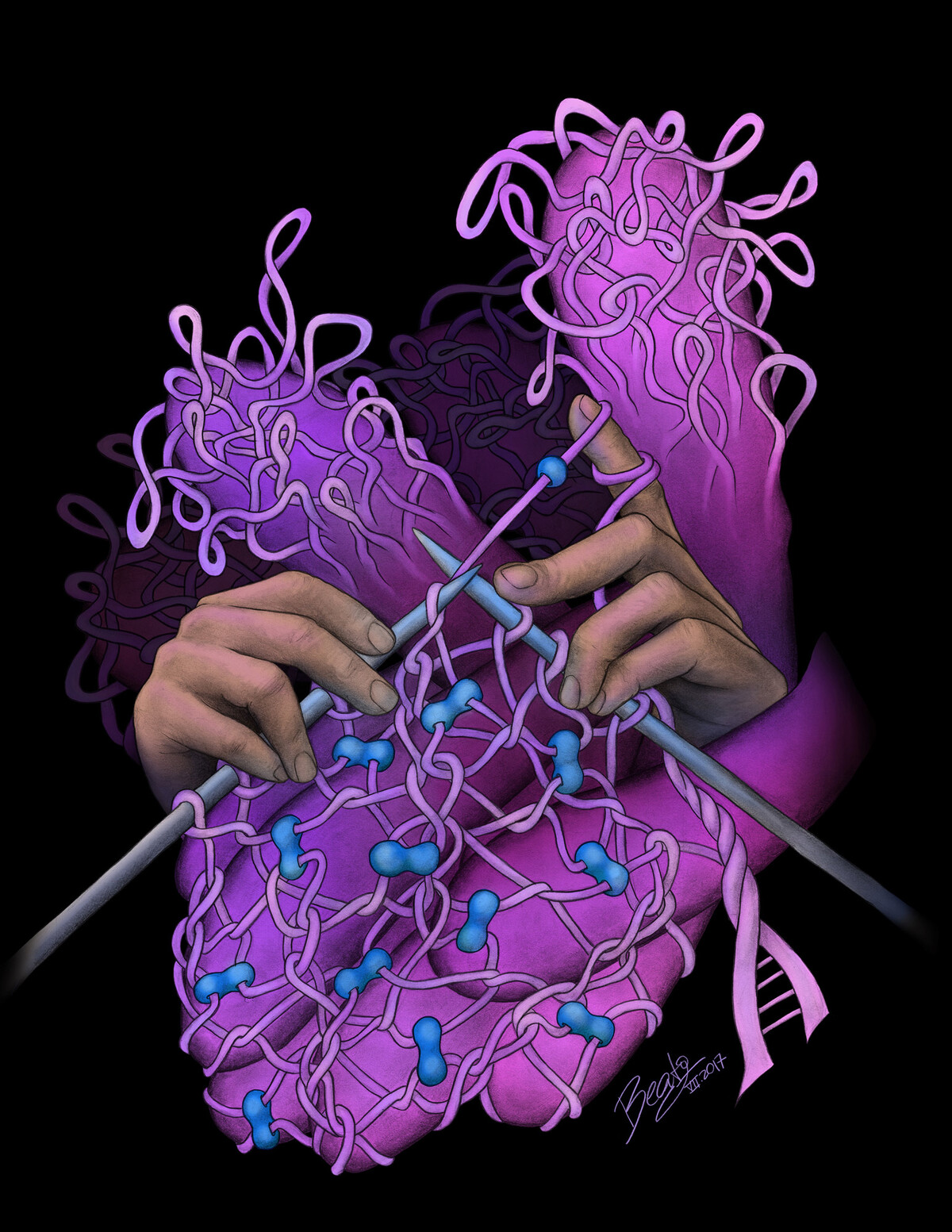
Welcome to the Gerlich Lab
The Gerlich laboratory studies how chromosomes organize inside human cells. We are particularly interested in the three-dimensional architecture of the genome, the biophysical properties of chromosomes, and nuclear assembly after mitosis.
Vision
All cells store their genetic information in long DNA molecules that are folded into chromosomes. Chromosomes must support gene expression, DNA replication, repair, and recombination, as well as the mechanical transport of the genome during cell division. To achieve this, they acquire distinct architectures and physical properties at different stages of the cell cycle. During interphase, chromosomes fill the nuclear space as highly folded chromatin fibers to enable gene expression and DNA replication. When a human cell divides, its nucleus disassembles, and chromosomes form compact bodies that transport one genome copy to each daughter cell. Our interdisciplinary team leverages the combination of cutting-edge microscopy, genomics, and biophysical and biochemical reconstitution assays to uncover the molecular mechanisms underlying dynamic chromosome organization.
Mission
The chromosome cycle is one of the most fascinating processes of cellular reorganization. During S-phase, chromosomal DNA is copied using its own highly intertwined template. Each sister chromatid is then organized into a series of DNA loops that specify domains of gene regulation and leave sister chromatids linked along their arms to support homology-directed DNA damage repair. Upon mitotic entry, the cell nucleus disassembles and chromosomes form compact bodies that segregate sister chromatids to opposite spindle poles. Each set of chromosomes is then wrapped in a membrane to rebuild a functional nucleus during mitotic exit.
Several key organizers of chromosomes have been identified, including the SMC protein complexes cohesin and condensin (thought to form chromatin fiber loops by motor-driven extrusion) and posttranslational modifications of nucleosomes (which control chromatin compaction via phase separation). How these factors coordinately organize chromosomes on multiple scales remains poorly understood. We use a combination of highly automated genome imaging, CRISPR/Cas9-based genome engineering, and DNA-sequencing-based chromosome conformation capture techniques to address key questions about dynamic chromosome reorganization during the cell cycle.
Through high-content screening, we have discovered that mitotic chromosomes are dispersed in the cytoplasmic phase by a surfactant-like protein. We have also identified a protein that forms a network around anaphase chromosomes to shape a single nucleus during mitotic exit. We are currently using chromosome conformation capture technologies to investigate how chromosomes reorganize their DNA from replication until the formation of resolved sister chromatids during mitosis, and implications for gene expression and homology-directed DNA repair.
Our goal is to further dissect the molecular mechanisms regulating the dynamic organization of the genome by combining cell biological, genomics, biophysical, and in vitro reconstitution approaches. Our integrative team is supported by scientific core facilities and a network of international collaborations. Meet some of the group members, see summaries of our projects and learn more about our unique approach to science.
Selected Publications
Schneider, MWG., Gibson, BA., Otsuka, S (...) Rosen, MK., Gerlich, DW. (2022). A mitotic chromatin phase transition prevents perforation by microtubules. Nature.
Mitter, M., Gasser, C., Takacs, Z (...) Micura, R., Gerlich, DW. (2020). Conformation of sister chromatids in the replicated human genome. Nature. 586(7827):139-144
Cuylen-Haering, S., Petrovic, M., Hernandez-Armendariz, A (...) Holt, LJ., Gerlich, DW. (2020). Chromosome clustering by Ki-67 excludes cytoplasm during nuclear assembly. Nature. 587(7833):285-290
Samwer, M., Schneider, MWG., Hoefler, R (...) Zuber, J., Gerlich, DW. (2017). DNA Cross-Bridging Shapes a Single Nucleus from a Set of Mitotic Chromosomes. Cell. 170(5):956-972.e23
Cuylen, S., Blaukopf, C., Politi, AZ (...) Hyman, AA., Gerlich, DW. (2016). Ki-67 acts as a biological surfactant to disperse mitotic chromosomes. Nature. 535(7611):308-12
Funding
- ERC Avanced Grant (2021-2026)
- WWTF Grant "Multimodal Imaging” (2020 - 2024)
- WWTF Grant “Chemical Biology” (2018-2022)
